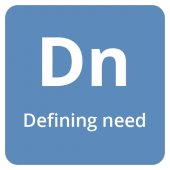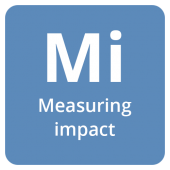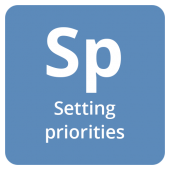What will the fund be used for?
Local wellness funds invest resources in interventions tied to their missions and driven by the needs and priorities of the community and local funders. Identifying need, decision-making, and measuring change are all integral to how a local wellness fund deploys its resources.
Communities, and the multisectoral partnerships serving them, have been identifying targets and objectives for health improvement for years. In recent years, this process has become more embedded in regulations and requirements of government accrediting bodies,¹,² funding eligibility,ᶦ and nonprofit status.³ The intervention strategies of a local wellness fund are often tied to its mission and driven by the local context, a community’s health priorities or needs, and the priorities of local funders. Accordingly, local wellness funds often use their resources to support one or more efforts that aim to improve health in the local community. Intervention strategies usually have a clear target, purpose, or outcome to be achieved.
Some local wellness funds are established because funders have identified specific gaps or needs that they wish to address; or inversely a need or gap exists and resources are being sought to address it.
Some of the most common targets of local wellness funds include:
- Improving access to medical or behavioral health care
- Preventing chronic disease and illness
- Developing healthy, sustainable housing
- Promoting healthy eating
- Building community economic development
- Creating healthy environments
- Addressing emerging needs, including COVID-19
To learn more about each element, select the name of the element.
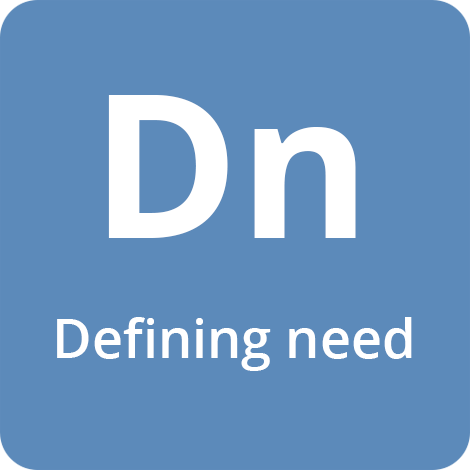
Defining Need: Needs can be defined as the gap between what is and what should be.⁴ Identifying local needs and resources can help changemakers understand how to improve their communities in the most logical and efficient ways possible.
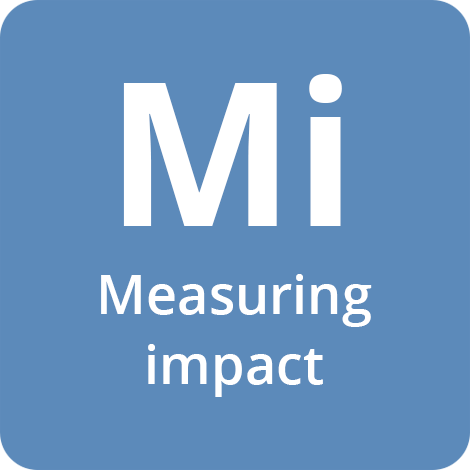
Measuring Impact: Most local wellness funds are established to bring about some measure of change. Once areas of need and opportunities for improvement have been defined, it is important to determine the best strategy to addressing each priority and measure the impact to determine success of the local wellness fund.

Setting Priorities: Central to the process to determine the uses of a local wellness fund is setting priorities and decision-making.
- Local wellness funds must balance a variety of factors in deciding what to invest in, including local needs, donor priorities, emerging needs, community input. In many cases, these can be flexible enough to address emerging needs created by an emergency, such as, the global pandemic.
- A wellness fund might function like the corpus of a philanthropic foundation or an investment fund that has the flexibility to make grants and investments.
- When selecting uses for a local wellness fund, several considerations include:
- There are opportunities to align uses with local community health improvement plans, and local, regional, or state-level population health priorities.
- Focus efforts on one or two strategies that appear to be most effective, address the highest priority needs, and are the most feasible to fund — greatest leverage.
- Clarify and communicate the case for each strategy.
- Engage a wide range of stakeholders in the oversight and evaluation of efforts
- Build a proof of concept before full implementation.
- Adopt a mindset of agile development — many iterations with constant adaptability.
- Good data are needed to measure the success of the fund’s uses and demonstrate return on investment.
- Important attributes to consider when comparing potential uses of a local wellness fund include:
To learn more about each topic, select the element box.
Local wellness funds that do not have predetermined uses and those that are redefining or expanding the uses of their fund may employ a variety of methods and tools. In this section, three enabling elements of uses are outlined: Defining Need, Setting Priorities, and Measuring Impact.
Defining Need: Needs can be defined as the gap between what is and what should be.⁴ Identifying local needs and resources can help changemakers understand how to improve their communities in the most logical and efficient ways possible.
Measuring Impact: Most local wellness funds are established to bring about some measure of change. Once areas of need and opportunities for improvement have been defined, it is important to determine the best strategy to addressing each priority and measure the impact to determine success of the local wellness fund.
Setting Priorities: Central to the process to determine the uses of a local wellness fund is setting priorities and decision-making.
- Local wellness funds must balance a variety of factors in deciding what to invest in, including local needs, donor priorities, emerging needs, community input. In many cases, these can be flexible enough to address emerging needs created by an emergency, such as, the global pandemic.
- A wellness fund might function like the corpus of a philanthropic foundation or an investment fund that has the flexibility to make grants and investments.
- When selecting uses for a local wellness fund, several considerations include:
- There are opportunities to align uses with local community health improvement plans, and local, regional, or state-level population health priorities.
- Focus efforts on one or two strategies that appear to be most effective, address the highest priority needs, and are the most feasible to fund — greatest leverage.
- Clarify and communicate the case for each strategy.
- Engage a wide range of stakeholders in the oversight and evaluation of efforts
- Build a proof of concept before full implementation.
- Adopt a mindset of agile development — many iterations with constant adaptability.
- Good data are needed to measure the success of the fund’s uses and demonstrate return on investment.
- Important attributes to consider when comparing potential uses of a local wellness fund include:
Guide to Prioritization Techniques
This tool from the National Association of County & City Health Officials describes five prioritization methods: multi-voting, strategy grids, nominal group technique, the Hanlon Method, and the prioritization matrix. Each subsection includes step-by-step instructions on implementation followed by examples illustrating practical applications that local wellness funds can utilize in order to guide decision-making and consensus.
Equity and Empowerment Lens – 5 Ps Worksheet
This tool from Multnomah County Office of Diversity and Equity is part of Multnomah County’s Equity and Empowerment Lens which seeks to improve planning, decision-making, and resource allocation leading to more racially equitable policies and programs. This worksheet asks questions in the areas of people, place, process, power, and purpose. Local wellness funds can use this resource to guide partners at all levels to align around transformative values, relationships, and goals moving towards racial equity.
Mobilizing for Action through Planning and Partnerships
This resource is a community-driven strategic planning process for improving community health. Facilitated by public health leaders, this framework can help local wellness funds apply strategic thinking to prioritize public health issues and identify resources to address them.
Well-Being In the Nation Network Measures
This measurement framework created by the Well-Being in the Nation Network (WIN) offers a set of common measures to assess and improve population and community health and well-being across sectors. The framework is divided into three elements: core measures, leading indicators, and a full flexible set of measures. WIN measures can be used by local wellness funds to show connections between social conditions, health, community, and well-being. The core measures of WIN are well-being of people, well-being of places, and equity.
- Public Health Accreditation Board. (2014). Domain 1 & Domain 4. In Standards & Measures, Version 1.5. Retrieved from https://phaboard.org/wp-content/uploads/PHABSM_WEB_LR1-1.pdf
- Health Resources and Services Administration’s Bureau of Primary Health Care. (2018, August). Chapter 3. In Health Center Program Compliance Manual. Retrieved from https://bphc.hrsa.gov/programrequirements/compliancemanual/index.html.
- Internal Revenue Service. (2021, August). Community Health Needs Assessment for Charitable Hospital Organizations – section 501(r)(3). Retrieved from https://www.irs.gov/charities-non-profits/community-health-needs-assessment-for-charitable-hospital-organizations-section-501r3.
- Center for Community Health and Development. (n.d.). Chapter 3, Section 1: Developing a Plan for Assessing Local Needs and Resources. Retrieved from the Community Tool Box: https://ctb.ku.edu/en/table-of-contents/assessment/assessing-community-needs-and-resources/develop-a-plan/main
¹ Foundations and federal funding applications often require some definition of the target audience and need using tools like requests for proposal eligibility and selection criteria.

